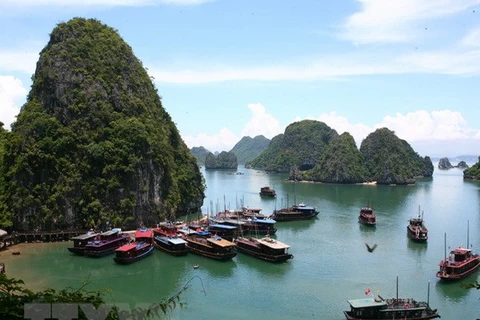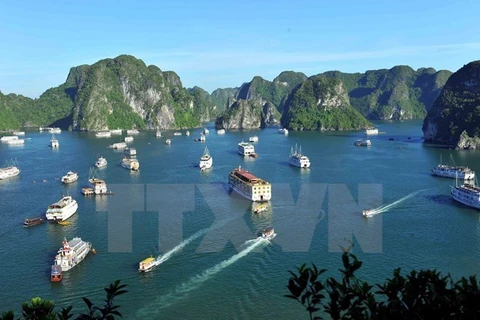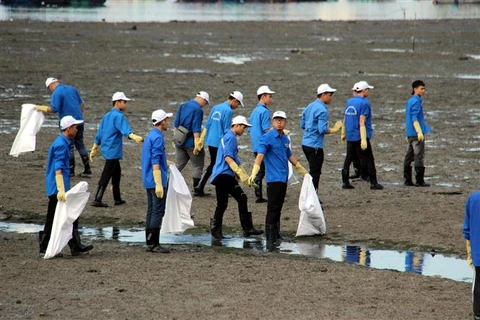Quang Ninh (VNA) – A management board of the undersea tunnel at the gateway of the world heritage site of Ha Long Bay has been set up under a decision announced by the People’s Committee of northeastern Quang Ninh province on May 31.
Vu Van Khanh, Director of the provincial Department of Transport, was appointed as head of the board.
The 1.3km-long undersea tunnel project in Ha Long city is estimated to cost 7.875 trillion VND (346.5 million USD).
It will start on Ha Long Street, at the intersection that leads into Sun World Ha Long Park (Bai Chay Ward), and end at the intersection on Le Thanh Tong Street (Hong Gai Ward) – two streets considered as “main axes” on the two sides of the Cua Luc Bay.
The tunnel is expected to help connect transport of coastal roads in Ha Long city.
This year, Quang Ninh will carry out two key transport projects, namely Van Don – Mong Cai Highway and Ha Long – Cam Pha coastal road.
The 80.2km-long Van Don – Mong Cai Highway with four lanes for vehicles will be carried out under the build-operate-transfer (BOT) form with a total investment of nearly 11.2 trillion VND (492.58 million USD). Fees will be collected for 20 years on the highway.
Meanwhile, the 27 km-long coastal road linking Ha Long - Cam Pha will be implemented under the build-transfer (BT) form, with a total investment of 5.6 trillion VND (246.4 million USD).
Construction of the Vingroup-invested project will begin by the end of June. Once completed, the road is expected to help ease traffic on National Highway 18A section running through Cam Pha city, while forming a modern and comprehensive transport network connecting urban areas in the province.
Together with other local transport projects, including the Hai Phong – Ha Long, Ha Long – Van Don highways, upgrades to National Highway 18, and Van Don international airport, the aforesaid key projects are hoped to improve the province’s transport infrastructure system, thus contributing to local socio-economic development and promoting local tourism and border- and marine-economic potential.
In the meantime, the province is focusing on improving its tourism infrastructure, targeting to welcome 12 million visitors, including 5 million foreigners, this year.
It has invested in building and upgrading many roads to shorten the travel time of tourists to Quang Ninh.
In late April, the final segments of the Bach Dang bridge connecting the northern port city of Hai Phong and Quang Ninh were joined.
The bridge, once operational, is expected to help shorten the distance from Hanoi to Quang Ninh from 175 kilometres to 125 kilometres as well as cut travelling time between the two localities by half.
Quang Ninh is endowed with natural advantages for sea and island tourism.
The province has a coastline of more than 250 kilometres and some 2,000 islets, two-thirds of the total in Vietnam. The spectacular stretch of coast connects the UNESCO-recognised World Heritage Site of Ha Long Bay with majestic natural scenery, Bai Tu Long Bay, Van Don and Co To islands and Tra Co beach with Cat Ba National Park in the northern port city of Hai Phong.
In 2017, a total of 9.87 million tourists visited the province, including 4.28 million foreigners. More than 70 percent of the tourists came via sea and island tours.
In the first five months of the year, the province served more than 7 million visitors, including 2.5 million foreigners. It expects to welcome 12 million holidaymakers by the end of this year, 5 million of them are foreigners. -VNA
VNA

























